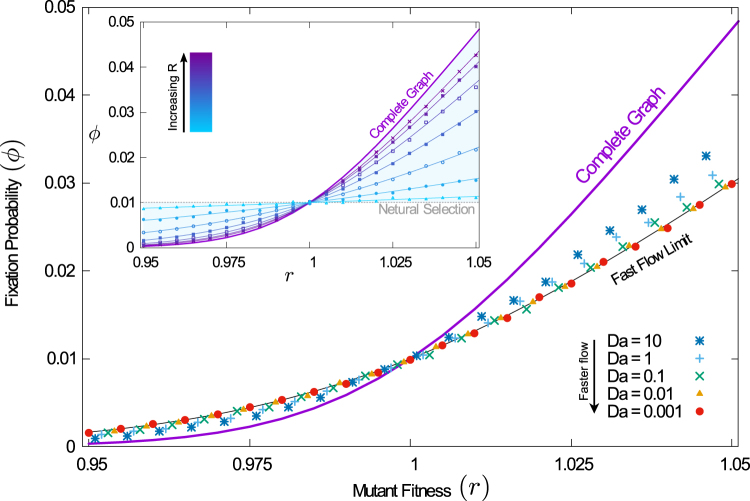Figure 1.
Fixation probability of a single mutant in a population stirred by a chaotic flow. The conventional theory for well-mixed systems [Eq. (1)] is shown as a thick purple line. Markers represent simulation results. In the main panel, these are shown for different Damköhler numbers. Reducing Da increases the flow speed relative to the evolutionary process. The thin continuous lines represent results from the analytical approach for fast flows [Eq. (2)]. The inset shows simulations for different interaction radii. Smaller interaction ranges makes selection increasingly more local, and the fixation probability approaches that of neutral selection, 1/N, shown for reference (dashed gray line). (Population size N = 100; R = 0.1 in main panel; Da = 0.1 in the inset; interaction radius varies from R = 0.025 to R = 0.175 in inset. See Supplemental Material for a description of the (parallel-shear) flow).

